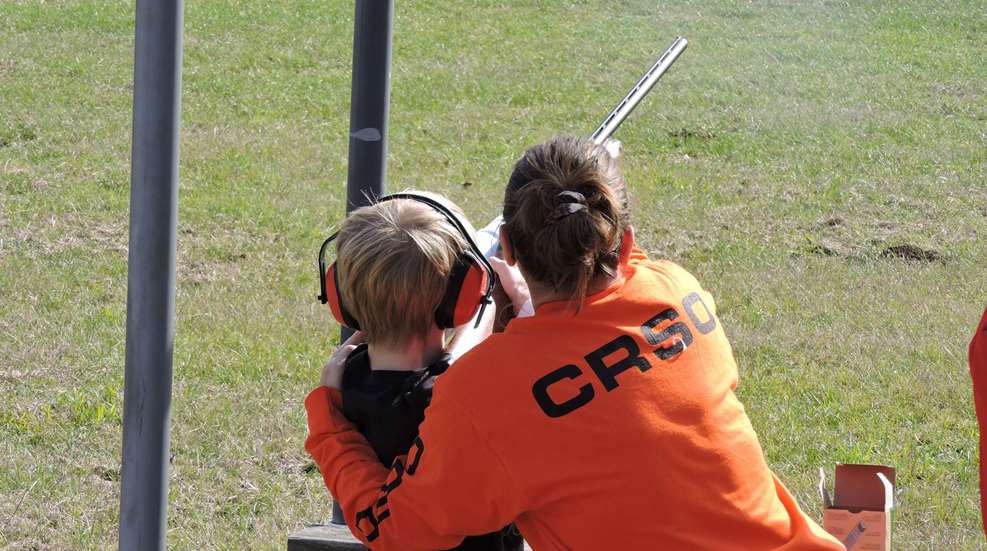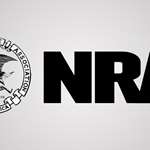
As an NRA Firearms Instructor, one of the most common questions I am asked is, “When is the best time to teach my kids about firearms?” The answer, without hesitation, is NOW! Be prepared to teach, parent and learn, though. As parents, we raise our children to be safe and avoid hazardous situations. Responsible gun owners owe it to their children to teach them the safe and proper use of firearms as early as possible in their development. Don’t rush it, but don’t ignore it either. Here are some things that might help.

Of course, NRA’s Eddie Eagle GunSafe Program, which preaches the highly effective message of "Stop! Don’t Touch! Run Away! Tell a Grown Up!" has been taught to tens of millions of American schoolchildren for decades. The program was developed in the late 1980s and ushered into NRA curriculum in the early 1990s by Marion P. Hammer, NRA’s first woman president (1995-1998). Hammer won a National Safety Council's Outstanding Community Service Award in 1993 for her work on the program.
Beyond the Eddie Eagle message, even parents who choose not to have guns in their house need to enroll their children in a gun safety course as early as possible. This is true if you live in a gun-friendly state or not. It does not matter if you are a responsible gun owner and properly secure your firearms, or if you choose not to have guns in the house, your children might find themselves at a friend’s house with unsecured firearms at that location. It is imperative that you have taught your children proper gun safety and the proper use of firearms. You owe to them to teach them what they need to know.

Several years ago, I started a Boy Scout Co-Ed Venturing Crew that is 100-percent NRA membership and only focuses on the shooting sports and hunting. All the youth members are required to attend NRA firearms courses not only for education, but primarily for safety reasons. I was conducting an NRA Pistol Instructor class to a room full of Boy Scout leaders who were getting trained and certified for their upcoming summer camps. Two 15-year-old girls from my Venturing Crew were also in attendance, and I asked them to do a little skit after one of the breaks.
As the Boy Scout leaders were gathering back to class, the girls came to the front and began their demonstration. One of the girls picked up a semi-automatic pistol loaded with dummy ammunition. She said to the other, “Look at my dad’s gun. It’s OK since my parents are not at home.” The other girl responded, “I don’t think we should be messing with that.” She then took the gun from the first girl’s hand and while keeping it pointed in a safe direction, removed the source of ammunition, worked the action back and forth ejecting the dummy round in the chamber, locked the slide back, then visually and physically inspected the chamber. She then placed the gun back on the table. I then asked them how many of their own kids could do that? I didn’t see enough hands raised. I told them that they had work to do.
When you start teaching your children about gun safety and the proper use of firearms all depends upon their development. There are five stages of child development. These are newborn (1-2 months), infant (3-12 months), toddler (1-3 years), preschool (3-5 years), and school age (6-17 years). It is the last three stages—toddler, preschool and school age—on which parents need to focus.
Toddler
It is during the toddler stage when we start teaching children right from wrong. This is also the stage that we teach children the meaning of the word “no.” It is about associating a word to an object. In this case, the word “no” is related to a potentially dangerous object. We do this to keep them safe.
Most parents remember teaching children not to touch everyday items in their homes that could injure them. We treat these items like responsible gun owners should treat their firearms. We secure these potentially dangerous items so our children cannot get to them such as adding covers and plastic plugs to electrical outlets, placing childproof locks on the knife drawer and on cabinets where we keep our household cleaning chemicals, and very importantly, locking up our firearms. The difference is many parents show dangerous household items to their children with a stern, “NO!” so they can associate the item with the word, but they never expose them to any firearm that may be locked up in the house.
In other words, their children never associate firearms with the word “NO” at an early age. Toddlers should be shown any firearm in the house and told “NO” to start the connection. As an example, before he retired, my husband was a Texas Game Warden. When he came home from work, we showed the kids his gun belt and pointed to his duty gun, along with a firm “NO!” It did not long before they would point at his gun when he was leaving or returning home from work and parrot the word “NO!” My boys are a perfect example of being exposed to guns at an early age and learning what “NO” means.
Preschool
During the preschool stage, ages 3 to 5, parents start teaching their children simple tasks. During this stage, children begin to refine their fine motor skills such as stacking blocks, running, catching a ball, and in today’s world, working a smart phone! This is also the stage when children start communicating with words and full sentences. They can also understand communications by their parents and others.

Usually, by the later part of the preschool stage, children can manipulate simple mechanical devices. This is the perfect time to introduce kids to (unloaded) air guns, the Red Ryder BB gun, and other smaller pellet guns. This is also the time that the basic fundamentals of shooting should be taught. My kids were proficient in lining up the front and rear sights of a firearm, learning what a cheek weld is, and the proper trigger pull by the time they were 5 years old. My husband and I had a plan, and we worked on it with our boys.
School Age
The school-age stage, ages 6 to 17, is when the bulk of learning takes place. This is the time that your children become proficient in hobbies and sports. Because there are so many things competing for their attention (girls, boys, cars, etc.), if you’ve failed to introduce them to the shooting sports by this time, your children may not develop the level of interest in shooting that you have.
We introduced our kids to firearms early. Each of my boys became proficient shooters using larger deer hunting calibers such as .243 Win, 25-06 Rem, and even 30-06 Sprg by the age of six, and each one took their first deer at 7 years old. We accomplished this with lots of range time and dry fire practice at home. Starting in October, we set up a tripod gun vise in the living room and left it up until mid-March. At age six, when they got home from school, they would sit behind the unloaded rifle and learn how to use a scope by lining up the sights on different targets, and practice their aiming, breathing, holding, trigger pull, and follow through. It did not take long for the boys to turn this daily practice into a competition. They began stacking quarters on the barrel and seeing who could be the steadiest while squeezing the trigger with the most coins stacked up without knocking them down.

Not only were they working on the NRA’s 5 Fundamentals of Rifle Shooting, but they were also working on the most important skill—safety. Before they could practice each day after school, they had to go through the clearing process to ensure that no live rounds were present by opening the action and visually and physically inspecting the chamber and/or the magazine, depending on the gun. These are necessary skills to get in the habit of to minimize the risk of an accidental discharge. They worked on these skills for years and as a result, they are some of the safest and best shooters I know.
Most parents would be surprised at what their children can do at an early age. It takes parental involvement, patience and trust. The key is start them early to bring them into the shooting world before you lose them to other interests. I have found that kids who were introduced to shooting by their parents from an earlier age, are more responsible individuals and less likely to take the wrong path in life. Kids who shoot and hunt with their parents also seem to have a closer bond. This is because the parents and their children develop a mutual connection with each other with a foundation of respect and trust. So, take you kids shooting today!
For more information on this topic and related publications, visit North American Outdoors.
A Boy’s Guide to Firearms
A Girl’s Guide to Firearms
Introducing Kids to Firearms and Hunting: A Parent’s Guide














































